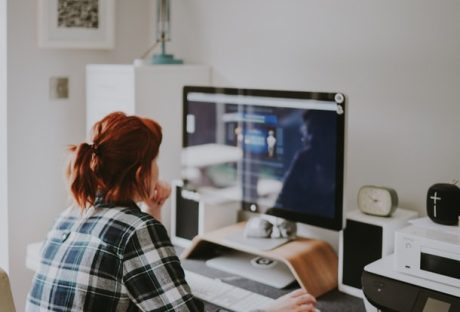Visual regression testing is the software testing process that is used to test your software application by visually finding any error or malfunctioning in the user experience. Visual regression testing ensures that an application or website maintains its intended look and behavior. It confirms the absence of any unplanned alterations to its visual design or functionality.
This procedure entails comparing a reference version of the application or website and its current version, aiming to identify any visual disparities.
Visual regression testing in a Cloud-based platform is the latest trend in the field of software testing and automation testing. It has various advantages, such as it increases the testing scope, costs less, and it increases testing flexibility.
In this article, you will see the concepts of visual regression testing on the cloud, best practices for it, and many such things.
What is Visual Regression Testing
Visual regression testing evaluates the impact of code changes on the user experience by comparing screenshots before and after execution. It’s also recognized as visual snapshot tests or visual testing, and its primary objective is to uphold visual consistency following updates.
The Function Of The Visual Regression Testing
Visual testing validates the suitability of an application’s user interface in terms of its visual attributes. This quality assurance process aims to confirm the accurate display of content and data on the application’s front end.
In case you’re not acquainted with the concept of Regression testing, its purpose is to ensure that any modifications made to the software do not disrupt any previously functioning elements. In the context of visuals, this testing guarantees that alterations to the software do not lead to style-related problems.
The true capability of visual regression testing can be leveraged with Cloud-based AI-powered test orchestration and execution platforms like LambdaTest. It allows the running of visual testing across a large farm of 3000+ real device and OS combinations. This helps to ensure cross platforms compatibility on the visual appearance and interface of the software applications.
Features Offered By The Cloud-Based Ai-Powered Test Orchestration And Execution Platform – Lambdatest For Robust Visual Regression Testing Are As Follows:
This section discusses the features which are offered by the test orchestration and the execution platform.
- Execute Selenium and Cypress tests across a range of programming languages, such as Java, NodeJS, C#, Python, and StoryBook. This empowers the delivery of flawlessly designed applications across almost any browser or device.
- Employ Mis-match Ignore feature of SmartUI’s Status Bar so that you can tackle the complexities of visual differentiations. This capability allows testers to crop the status bar out from the screenshots. Leveraging the high-end technique of image processing, it accurately detects and eliminates the status bar. This facilitates the analysis of essential UI components with due focus.
- Effortlessly install, set up, and execute the LambdaTest NPM package. This enables the direct implementation of the JS scriptsStorybook via our NPM CLI.
- Conduct regression testing, the visual ones for your mobile apps on genuine devices. Assure visual uniformity with precise pixel-to-pixel comparisons against your reference point, encompassing various screen sizes, resolutions, and layouts.
Best Practices for Visual Regression Testing on Cloud
Let us see the practices a tester must follow while performing visual regression testing on a cloud-based platform like LambdaTest.

Following these practices during the test automation will make your software application visually more powerful and efficient.
1. Tool Selection:
Choosing the appropriate tool to perform visual regression testing on the LambdaTest is one of the most important and essential steps in moving ahead of the testing process. Various parameters should be kept in mind during the tool selection for testing automation, such as the software type, compatibility aspects, resolution, etc. LambdaTest integrates with various tools like Selenium, Cypress, Playwright, and others, using which you can perform visual regression testing.
2. Consistent Environment:
Never forget to create a conducive setup that will facilitate cloud-based visual regression testing. The interface provided by using these environments allows you to examine the visual outcomes and input received during the testing process. The testing team has the ability to pause the visual regression testing procedure and make the necessary corrections.
The team conducting the testing should also maintain resource isolation for the environment. It aids in preventing any type of intervention during automation testing, which increases the effectiveness and productivity of cloud-based visual regression testing.
3. Isolation And External Factors:
Remember that the isolated environment should not be affected by any external factors. They include network latency or fluctuations, system updates, or background processes running on the testing machine. These factors may lead to visual error and malfunctioning of the software application. External influences can potentially introduce visual errors and cause malfunctions in the software application.
Ensuring a controlled environment by addressing the factors safeguards the accuracy of the testing results. All the screenshots and visual reports of the testing process will be saved in that specific folder. This will help to perform visual comparisons effectively.
4. Scriptless Test Cases
Visual regression testing on the cloud platform using scriptless test cases is the best approach. Since numerous cloud-based AI tools are available, test automation can be utilized to develop test cases simultaneously. It is because the testing scope of a programmed test case is limited.
But using AI technologies offered by LambdaTest for test case design opens up possibilities for the testing team to consistently cover the testing scope. It will perform visual testing against some test cases, and again, it will recreate the test cases according to the previous result and analysis. This practice will bring the best visual result for your software application.
5. Documentation Of Visual Test Cases
Documentation is a very effective and important practice in any software testing process. In visual regression testing, you need to test and verify the components visually, and here it is important to mark down your observations, bugs, and analysis and work on them accordingly.
For your visual regression tests performed in LambdaTest, you should create clear and succinct test cases and descriptions. You should also include comments or annotations to describe the aim and scope of your baselines and screenshots.
Additionally, you should preserve and maintain your screenshots and baselines using a version control system or a cloud-based service. Sharing and communicating with the client will help you understand their demand and make the best possible result.
6. Updating The Baseline
Updating the baseline is a very crucial step in the visual regression testing process when performed in LambdaTest. It consists of the practice of taking the feedback result and analyzing them. If the result is considerable, you can approve this update in the baseline. And if you think that it is not worth consideration, you can simply reject them. But you need to mention all these in the baseline. It is because this will help you in the future because you can see all your testing logs in the baseline.
Mention the changes that were done intentionally, their reasons, and such things. It will also help all the team members have an overview of the changes that are going on in the software testing process.
6. Optimize Testing Coverage And Scope
Always remember to prioritize the testing scope for each component, specifically when executing visual regression testing in cloud platforms like LambdaTest. The high-priority components must be paid more attention, and they should be executed with high precision.
Use the concept of full-page and component-based screenshots to compare the changes visually by the testing team. Using this practice in visual regression testing will help achieve a better UI experience and enhance the testing results. You can use some advanced features like custom attributes.
These attributes help find the elements separately during visual regression testing. Also, you can use the trigger events and DOM concept. These will help to perform the screenshot comparison effectively.
7. Performing Parallel Testing
Apart from this, you can leverage parallel test execution in performing visual regression testing in LambdaTest. Executing parallel testing is what makes visual regression testing productive and effective, though, along with those other factors.
8. Learn From Failure
It is the final practice that all testers must follow to perform visual regression testing on the cloud and during test automation. Learn from your previous failure. Document the mistakes that you have made previously. Write down the tool feedback and in which specific tool you got some issues performing the testing process. And learn from these highlights.
Make your testing goal and work on your failures. This will bring the best result for your software application. Also, it will help in the overall development of the organization as well as the individual tester. You should follow These best practices while performing visual regression testing on the cloud.
Conclusion
Visual regression testing is mainly used to find any kind of visual malfunctioning and errors in the software. Visual inconsistency is one of the major reasons that lead to decreased number of users of a product.
Some of the best practices that every testing team should follow to perform visual regression testing using the cloud are the selection of appropriate tools, using documentation, using AI-based test cases, etc. Various tools can be used to automate testing and perform visual regression testing on the cloud, such as LambdaTest.
Hope you get an understanding of the best practices for visual regression testing using the cloud and their various aspects after reading this article.
Read Also:






















